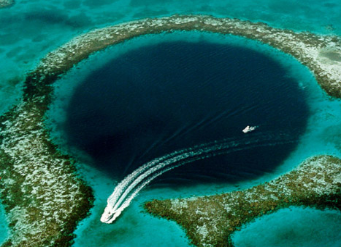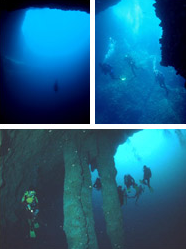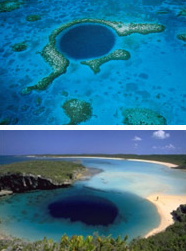Blue Hole - What Is A Blue Hole
|
||||||
A blue hole is an underwater sinkhole, or an inland or vertical cave. It is a circular, steep-walled depression which can be hundreds of feet deep. Blue holes are so called because of the deep contrast in the dark blue color of the waters in its depths to the light blue color of the shallow surrounding waters. The color contrast is better appreciated when viewed from the air above. Blue holes are largely devoid of oxygen due to poor water circulation. No aquatic life can thrive in it, except for some large numbers of bacteria, leaving it eerily empty. Some blue holes, however, have been discovered to contain ancient fossil remains, preserved in their depths. The best known blue holes are found in Belize, the Bahamas, in the Great Barrier Reef of Australia, in Guam, and the Red Sea in Egypt. The deepest blue hole in the world is the 663 feet deep Dean's Blue Hole located in a bay west of Clarence Town, Long Island, in the Bahamas. Other blue holes are only half as deep. The Great Blue Hole in Belize, however, has the largest diameter of 980 feet at the top entrance, compared to 115 feet for the Dean's Blue Hole.   |
 
>> back to Home |
|||||
